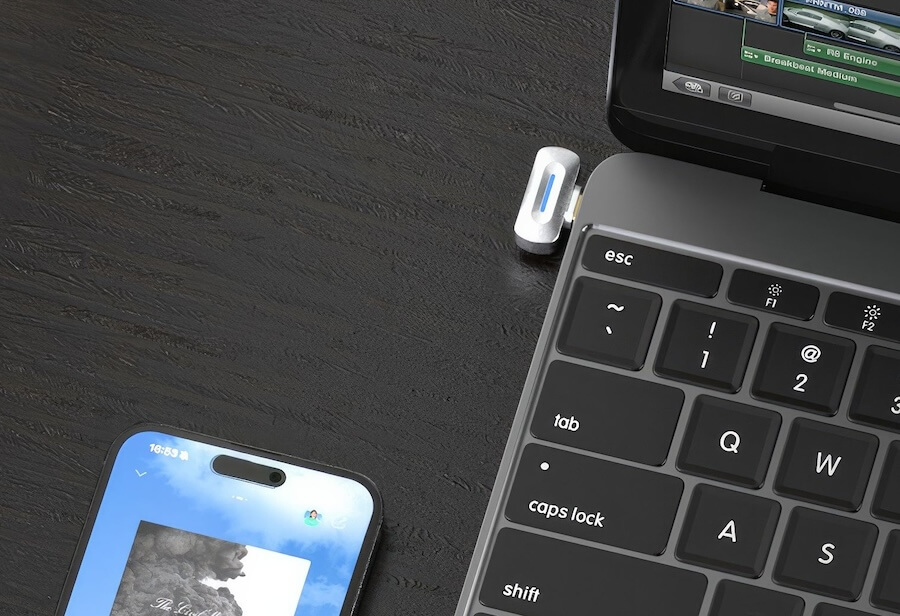If you think Bluetooth standards evolve faster than Apple finds new ways to remove ports, you’re not wrong. By the time you finally cave and buy that shiny new set of wireless headphones, there’s already a new Bluetooth spec out that makes your gear look like a flip phone. The reality is brutal: we cycle through phones every couple of years, tablets every three if we’re disciplined, and PCs whenever the hard drive gives up on life. Odds are the device you’re using to read this isn’t even equipped to handle the latest Bluetooth tricks—yet here we are, already talking about the next big thing.
That’s where Bluetooth LE transmitters come in. Think of them as the cheat code that lets your existing hardware play nice with next-gen wireless audio—without forcing you into yet another expensive upgrade cycle—but we’ll get to that part of the conversation in a second.
Technical vs. Functional Obsolescence: What It Means for Your Tech and Bluetooth Devices
This brings two points to the table, the first being that readers need to understand the difference between technical obsolescence and functional obsolescence. Technical obsolescence happens the moment a newer, more capable standard hits the market—long before the average consumer ever sees a product built on it. Case in point: Bluetooth 6.0 landed in September 2024, which instantly made every earlier version technically obsolete.
But here in the real world, we’re just now seeing gear roll out with Bluetooth 5.3 and 5.4 chipsets. Why? Because it takes time—typically two years—for manufacturers to design, certify, and ship products built around a new standard. Which means trying to avoid owning something that’s technically obsolete is about as productive as yelling at the tide to stop coming in.
Functional obsolescence, on the other hand, is when a product stops being fit for the job you actually use it for. Take my 2016 iPad Pro as an example. On paper, it’s been technically obsolete for years—blown past by faster models, and no longer eligible for the latest iPadOS updates. But functionally? It still does exactly what my grandson needs: playing games and streaming Netflix.
The moment Netflix refuses to run without a newer OS, or the games he wants demand features this iPad can’t support—that’s when it officially becomes functionally obsolete. Until then, it’s still useful. In fact, I’m betting I can squeeze at least another couple of years out of it, maybe until 2027, before reality catches up.
If it still does the job you need it to, why throw money at a newer model just for the sake of specs? That brings us to the second point: a product can be obsolete in ways that don’t actually matter—or that can be worked around without replacing the whole device.

In other words, just because something isn’t bleeding edge doesn’t mean it’s useless. Sometimes a simple adapter, dongle, or add-on can bridge the gap and keep older gear relevant instead of sending it off to the junk pile.
Laptops are a perfect example. Almost none of them natively support aptX, LDAC, or AAC, and only a handful of the latest models bother with LC3. Take my Dell 7550: six-core processor, plenty of memory, runs Windows 11 and all the latest software without breaking a sweat. But it’s stuck in the past on connectivity. The CPU is one generation too old for Wi-Fi 6E or 7, and the built-in Bluetooth adapter is limited to SBC—even though it’s technically Bluetooth 5.1.
For my needs, that’s fine. I’m not gaming competitively or editing 8K video, so I can limp along with older wireless standards and grab a USB wireless adapter if I really need the speed. Bluetooth would be the bigger headache, except I also have an iPad and a couple of phones (one Android, one iPhone) that handle every modern codec I need to test TWS and ANC headphones. Which means my SBC-only laptop hasn’t been keeping me up at night.
Bluetooth LE Transmitters: Upgrade Your Devices Without Replacing Them

Recently, though, I’ve run across some solid options for working around the Bluetooth bottleneck. The Questyle QCC Pro ($119) is one of the most versatile—it supports Bluetooth LE (LC3), LDAC, and aptX Lossless, and it’s certified for Apple gear while still playing nice with Android, Windows, Linux, HarmonyOS, and even the Nintendo Switch. Creative Labs’ BT-W6 ($80) doesn’t cover as many codecs or platforms, but it makes up for it with a Windows app that adds extras like a 13-band EQ and spatial audio.
FiiO’s BT11 ($44) goes wide as well, covering multiple sources along with LDAC and the full aptX lineup. And then there’s the Sennheiser BTD-700 ($59)—aimed mostly at boosting performance with their own headphones, but still expanding codec support for non-Sennheiser gear in the process.
The best part about these new Bluetooth LE transmitters is that every one of them uses USB-C, which means broad compatibility across devices—either directly or with a cheap Type-C to Type-A adapter. Even better, they’re all priced under $120, with two of them coming in under $60. That’s a far cry from replacing a laptop or iPad just to keep up with codec support.
The Questyle in particular stands out by finally bringing LDAC and aptX to the iPhone family—something a lot of users have been waiting on. For me, the real win is being able to test headphones on the same laptop I write on. It’s not exactly a reference-grade source, but when you travel as much as I do, having a functional setup on the go means I can turn downtime into writing time.
Look for short reviews of all four transmitters in the coming weeks, along with a full comparison matrix.
